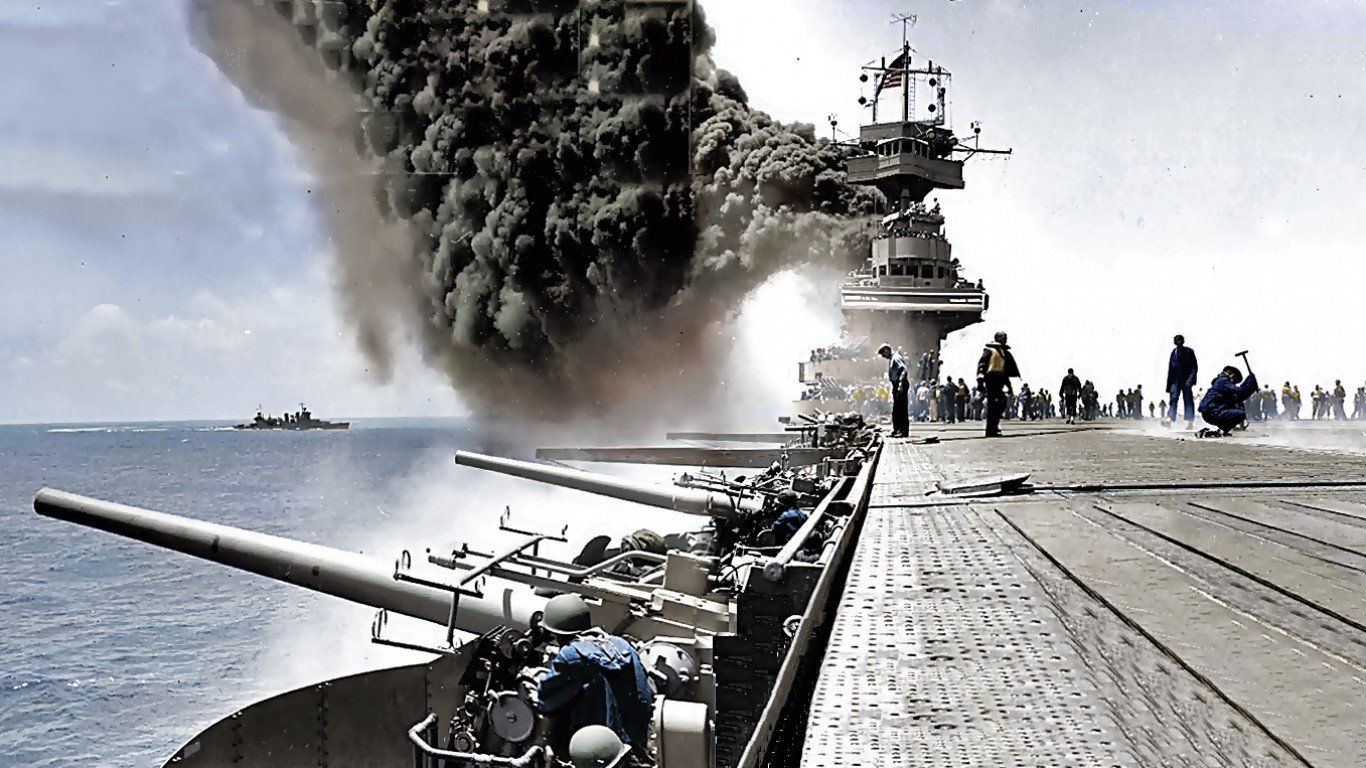America is a great and very successful country. Since it was founded back in 1776, this country has been through a lot, and unfortunately, bloodshed has been a part of that history. Today, we’re going to talk about the most famous battles in American history. We’ll tell you when they happened, what occurred during the confrontation, and why these important moments in history were so influential back then and also today.
To list the most famous battles, 24/7 Tempo consulted various sources, including the History Channel, MountVernon.org, National Geographic, and other educational sources. We then considered the battles that most shaped the United States to help educate the masses. (Click to read about the most disastrous battles in U.S. History.)
1. Battle of Gettysburg
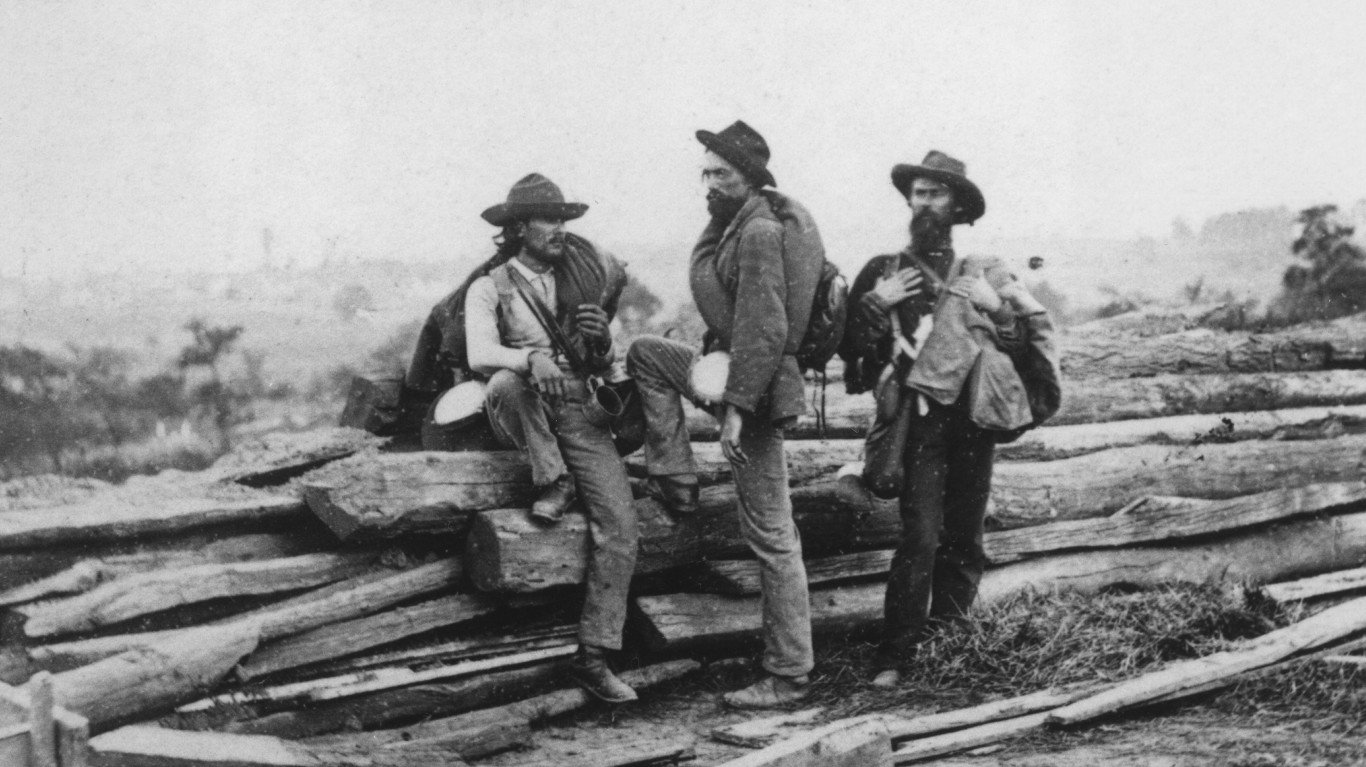
The Battle of Gettysburg took place during the Civil War. It was a relatively short affair at about three days, and it occurred between July 1st and 3rd of 1863. It was a battle waged between the Southern Confederate Army (General Robert E. Lee) and the Northern Union Army (General George Meade). While there was fighting throughout, it was on the third day when General Lee sent General Pickett to attack the Union Army.
The result was a bloodbath, with over 46,000 casualties, including 8,000 deaths, and the retreat of the Confederate Army. The soldiers then mostly used revolvers, cannons, rifles, and swords. In addition to being one of the most famous battles in American history, it is also thought to be the deadliest of the Civil War and also considered the largest battle ever fought on North American soil.
As a result of the infamous battle, President Lincoln later gave the Gettysburg Address at the Soldier’s National Cemetery in Gettysburg. The Civil War didn’t end during that battle, but it was considered a major turning point and signaled a future win for the Union.
2. Battle of Antietam
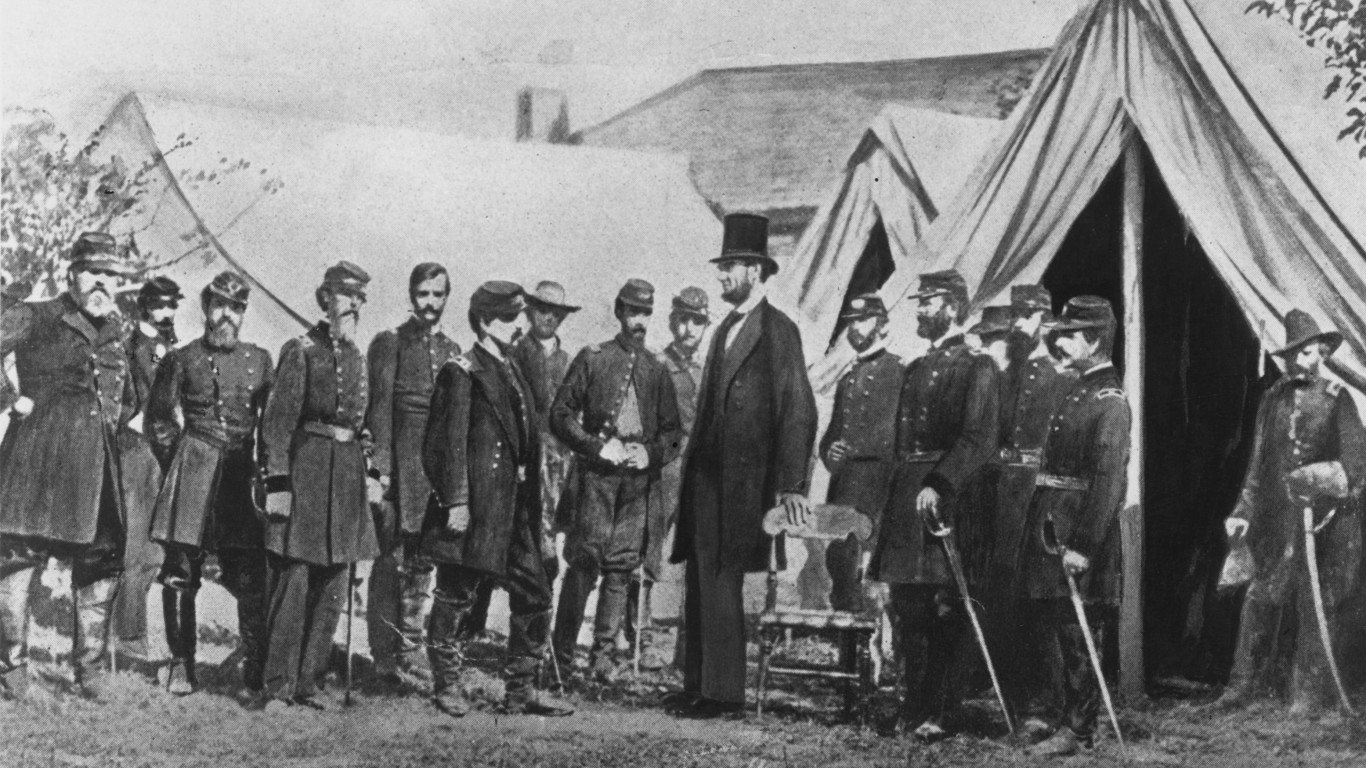
This is one of the most famous battles in American history and another of the deadliest. It all took place on one day: Sept. 17, 1862. Again, Confederate General Robert E. Lee was looking to make progress during the Civil War. He took his entire army (45,000 troops) and put them on the task of invading the state of Maryland. To defend the area, Union General George B. McClellan brought less than three-quarters of his remaining troops.
Once the dust settled, there were over 20,000 casualties (12,401 for the North and 10,316 for the South). However, there weren’t really any winners as the battle ended as a tactical draw. If the Confederate Army had been successful, they would have been one step closer to causing disruption in Washington D.C.
3. Battle of Trenton
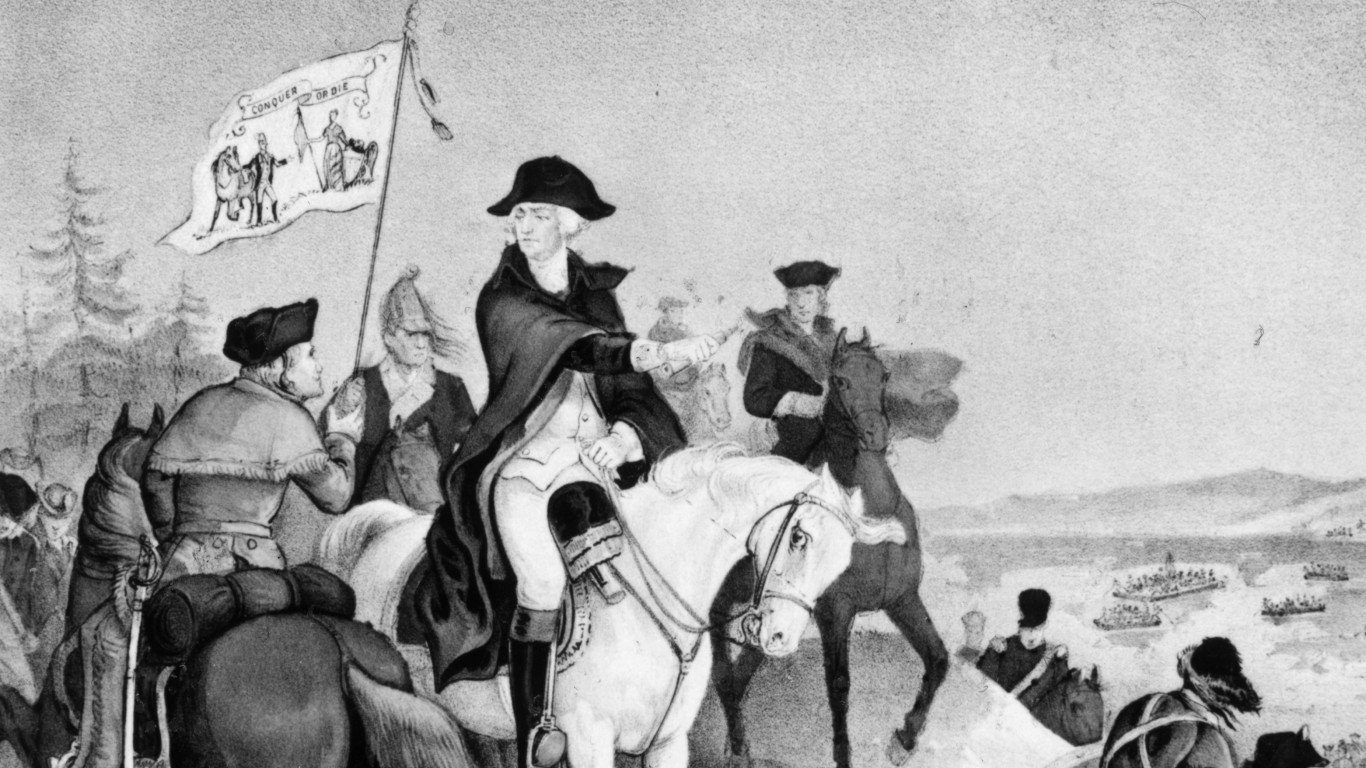
During the Revolutionary War, George Washington was trying to help his army win so that our country could become what it is today. However, doing so was proving difficult, and in December of 1776, he found his army facing several defeats, dwindling supplies, and a lack of good soldiers. Looking for a win and a chance to get back in the game, he had an idea to cross the Delaware River at night so they could attack a Hessian garrison (German troops hired by the British to help them along the way) that was in Trenton, New Jersey.
It was not an easy mission. Just getting across the river was a challenge since it was night and there was a winter storm. However, they made it and attacked around 8 am, and after a short confrontation, the Hessians surrendered.
4. Battle of Bunker Hill

Bunker Hill was one of the first major confrontations of the American Revolution and showed the troops on either side that this was not a war that would end overnight. On June 17, 1775, British forces and their Major General, William Howe, marched towards Bunker/Breed’s Hill. They approached in a column formation. The leader of the militiamen, Colonel William Prescott knew that his side was low on ammunition. That’s why, it was during this famous U.S. battle that he ordered his troops with the famous line, “Don’t fire until you see the whites of their eyes!”
When the British army was within yards, the Americans let loose a barrage of musket fire. The British attacked and retreated a few times. On the third occasion, the Americans were almost out of ammunition, and they eventually turned to hand-to-hand combat until they were eventually forced to retreat.
In the end, it was considered to be a tactical victory for the British, but it was not a win as far as morale. Even though they were the winners, they still suffered twice as many casualties as the Americans, and they lost many officers. However, while they lost a lot of good people, the Americans received a major morale boost, so they kept fighting, and eventually, those efforts paid off.
5. Battle of Saratoga
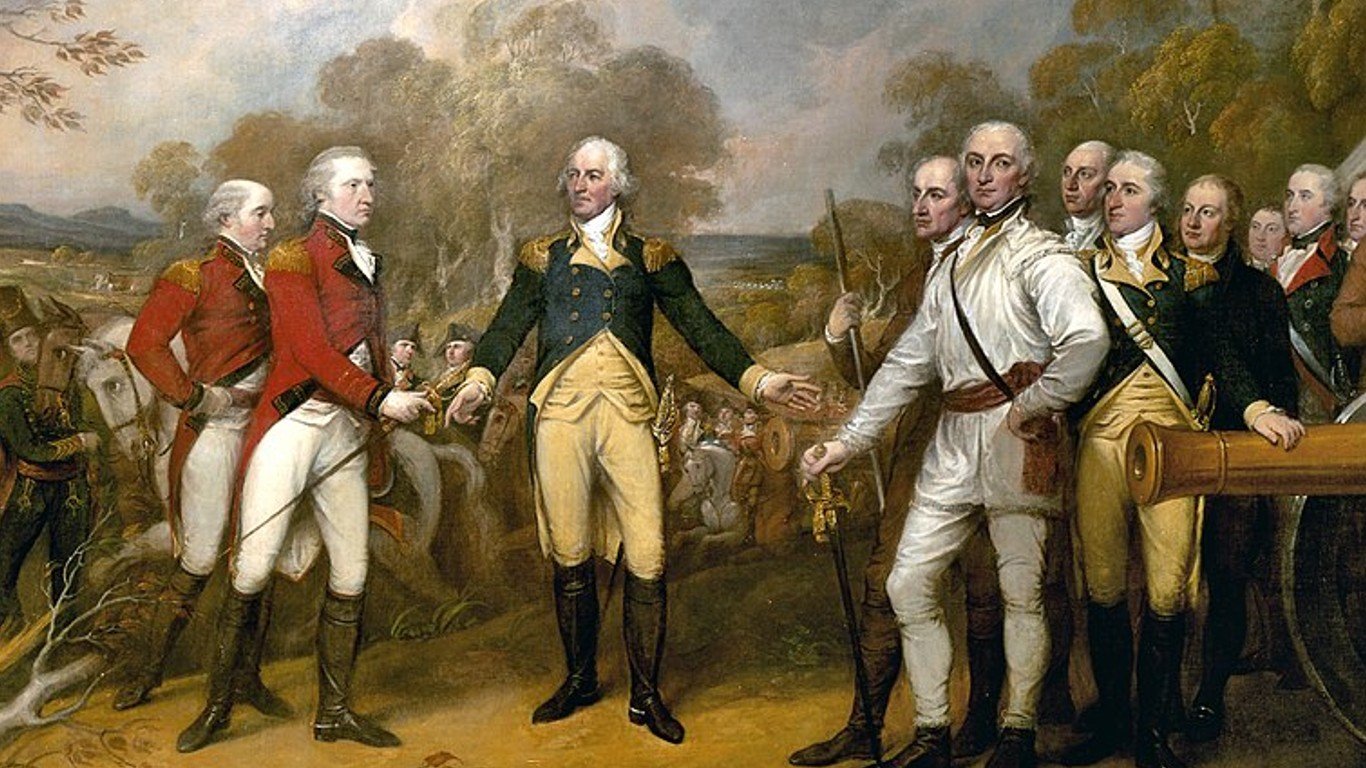
Another of the most famous battles in American history was the Battle of Saratoga, which was one of the major turning points during the Revolutionary War. This altercation took place in upstate New York. British General John Burgoyne had orders to invade New England so they could separate it from the rest of the U.S. The Battle of Saratoga was an attempt to stop that plan, and it took place in two stages. One that occurred on September 19, 1777, and another that happened on October 7, 1777.
Though it was tough, this was an American victory. In addition to winning the battle, victory here signified to the French that the Americans could hold their own, and so the two of them formed an alliance.
6. Battle of Atlanta
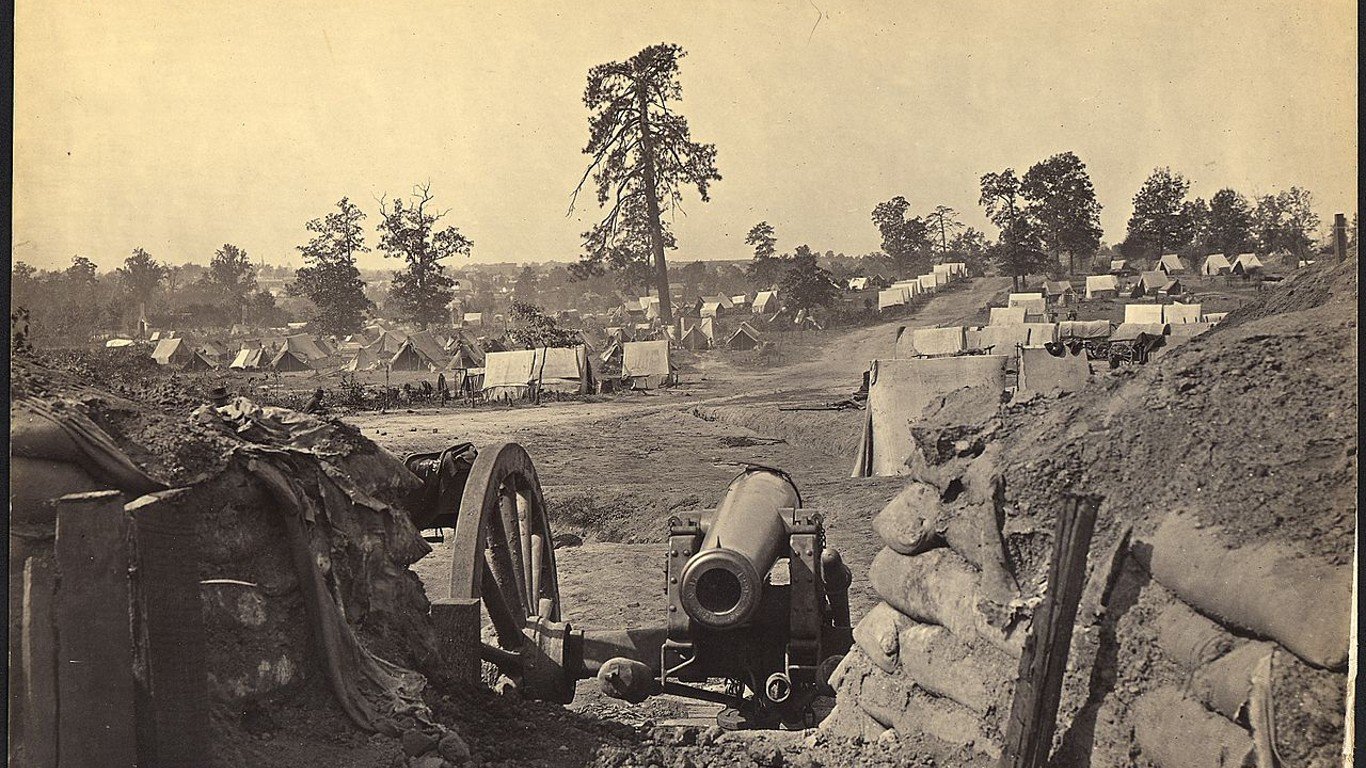
This is one of the quintessential battles of the American Revolution. The conflict took place after the Continental Army lost several battles in the South, and they needed a win. Like many other battles, the winning of this altercation gave the Americans an ego boost and a belief that they really could win this war. This famous U.S. battle took place in Cowpens, South Carolina when the Americans were led by the great strategist Brigadier General Daniel Morgan and the British by Lieutenant Colonel Banastre Tarleton. All in all, the battle lasted less than an hour, and although there were hundreds of casualties, it was still a victory for America.
7. Battle of Cowpens

This is one of the quintessential battles of the American Revolution. The conflict took place after the Continental Army lost several battles in the south and they needed a win. Like many other battles, the winning of this altercation gave the Americans an ego boost and a belief that they really could win this war. This famous U.S. battle took place in Cowpens, South Carolina when the Americans were led by the great strategist Brigadier General Daniel Morgan and the British by Lieutenant Colonel Banastre Tarleton. All in all, the battle lasted less than an hour, and although there were hundreds of casualties, it was still a victory for America.
8. Battle of Shiloh
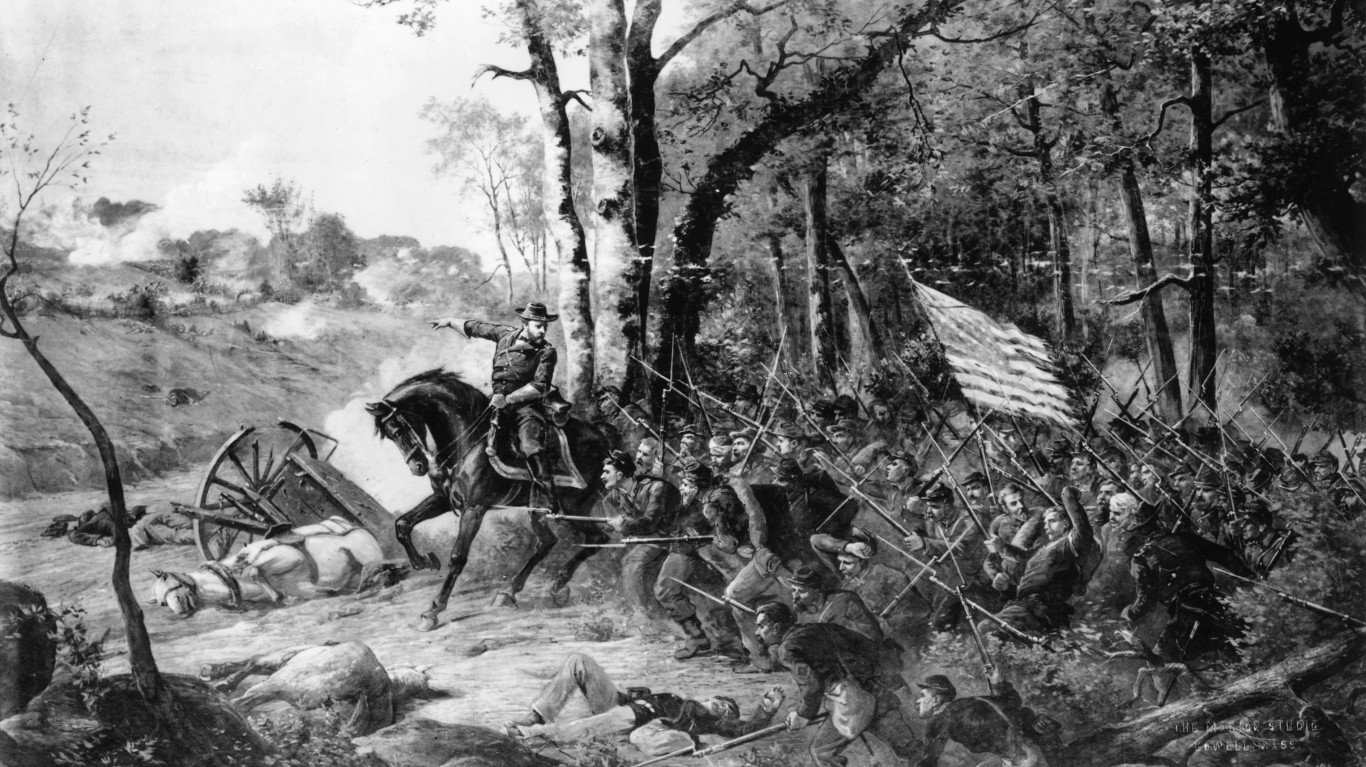
Another of the great historical battles was the Battle of Shiloh, which took place during the Civil War on April 6th and 7th of 1862 in southwestern Tennessee. This was when the Union army was led by Generals Grant and Don Carlos Buell and the Confederate army by Generals P.G.T. Beauregard and Albert Sidney Johnston. This altercation took place after the Union had captured a couple of Confederacy strongholds and forced them to retreat. The Confederacy’s plan of attack was to surprise General Grant, which they did. General Albert Johnston was killed during the battle. The Confederacy started strong but soon fell behind and eventually had to retreat. There were thousands of casualties on each side.
9. D-Day: The Invasion of Normandy
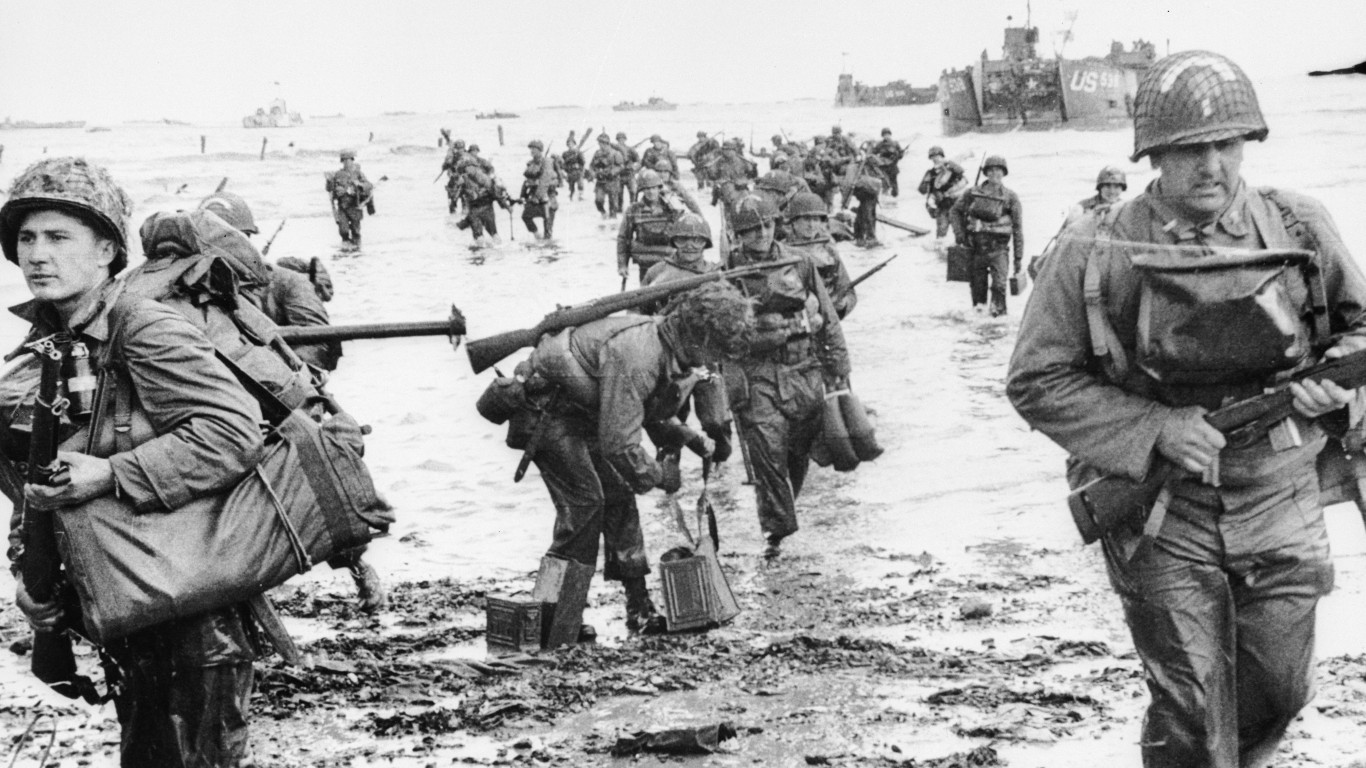
This is the first of our famous battles that wasn’t fought on American soil. This was the day on June 6, 1944, when the Allied forces of America, Britain, France, and Canada attacked German forces as they stormed the coast of Normandy, France. This was undoubtedly one of the most famous battles in American history. It was also a major operation, as it involved over 150,000 soldiers. The Allied troops tricked Germany into thinking they would attack north of Normandy, and that helped their chances. The strategy worked, and this victory became a turning point for World War II.
There were a few other strategies that worked in the favor of the Allies. One was that they waited until a day with high tide so that they could avoid obstacles put in the water by the Germans. Also, the first wave of attackers were paratroopers. To keep those paratroopers safe and confuse the Germans, the Allied forces also dropped thousands of dummies, and the plan worked. This epic battle plan was a success, and it helped the good guys push the Germans out of France.
10. Battle of Iwo Jima
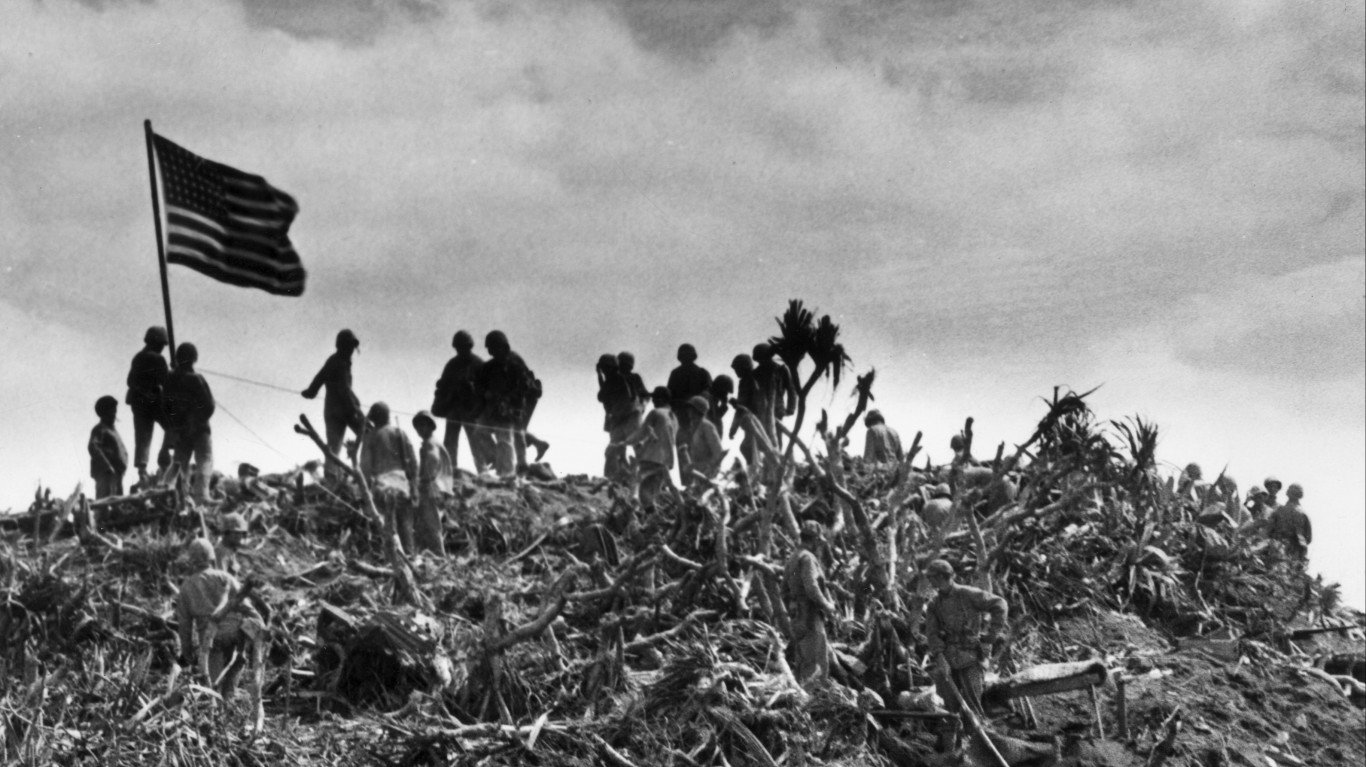
The Battle of Iwo Jima is one of the most famous battles in American history because it was the first major battle during World War II that occurred on Japanese land. The actual island of Iwo Jima is located 750 miles from Tokyo. It’s a flat island, and the Americans wanted it as a place to land their planes. This battle was near the end of the war. U.S. forces thought it would be relatively easy to take over the island. However, the battle took more than a month. In the end, the Americans were successful.
There were also many casualties, especially on the first day. The Japanese had dug tunnels under the ground, and when the Americans approached, they would come out and attack. These tunnels were extensive, and it made the conflict very complicated. After 36 days, successful U.S. forces were able to raise an American flag on top of Mount Suribachi.
11. Battle of Midway
The Battle of Midway was a quintessential battle that was a turning point during World War II. The whole altercation was about taking over the island of Midway. It’s located 2,500 miles from Japan and is considered an important strategic island. Both sides wanted it. The battle began when the Japanese had a plan to sneak up on U.S. forces and destroy their aircraft carriers. However, American code breakers were able to learn about their plan and the battle waged on. During the altercation, several ships were sunk or destroyed, including the Japanese Hiryu and the American Yorktown. The Japanese lost four aircraft carriers which was very detrimental to their side. So it was a good moment for the Americans.
12. Attack on Pearl Harbor
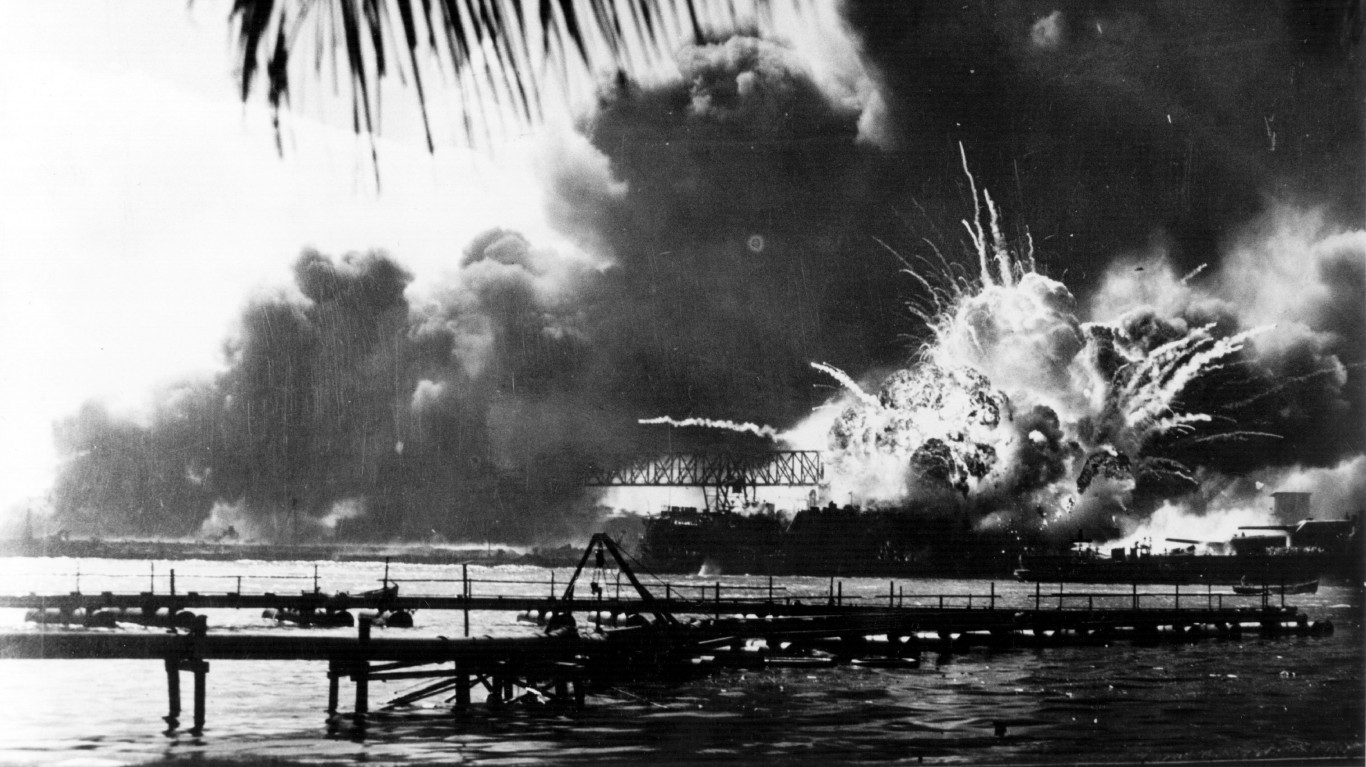
On December 7th, 1941, Japanese forces launched a surprise attack on Pearl Harbor, an island located in Hawaii. Although World War II had already been raging for two years, this attack forced the United States to enter the conflict. It began because the Japanese were worried about American troops in Hawaii and wanted to attack and disable the US Navy.
The attack was completely unexpected and very hectic. The Japanese soldiers bombed the warships and attacked the fighter planes so they couldn’t be used. There were two waves of attack. Although the U.S. forces were able to fight back in a limited capacity, America took most of the damage. As is often the case in these situations, the idea of the Japanese was to break the spirits of the Americans, but instead, they united and entered the war, and the rest is history. (Read about World War II weapons that didn’t work.)

